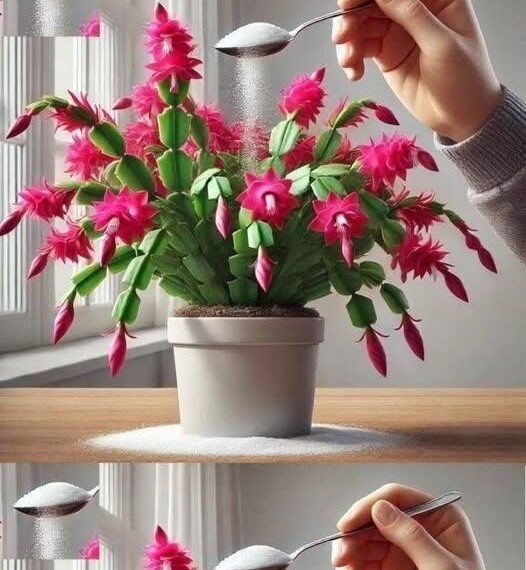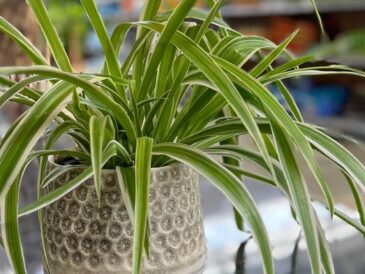If you’ve ever looked at your Christmas cactus and thought,
“Why does it look so dull while everyone else’s is bursting with blooms?”
…you’re not alone. Many plant lovers struggle with slow growth, pale leaves, or zero flowers. The good news? There’s a simple trick – just one spoon of the right ingredient – that can transform even the saddest, ugliest plant into a lush showpiece.
In this article, you’ll learn the why and the how, plus bonus tips for boosting your Christmas cactus health all year long.
🎄 Meet the Christmas Cactus (Schlumbergera)
Unlike typical desert cacti, the Christmas cactus is a tropical succulent native to the rainforests of Brazil.
✅ It loves humidity.
✅ It thrives in bright, indirect light.
✅ And with the right care, it can bloom multiple times a year.
But here’s the catch:
It’s a heavy feeder when preparing to bloom. If you’ve been relying only on water, your plant might be starving.
🥄 The Magic of One Spoon
Gardeners all over the world have discovered that just one spoon of a nutrient‑rich additive can kickstart incredible growth.
✅ Option 1: A Spoon of Epsom Salt (Magnesium Sulfate)
👉 Mix 1 tablespoon of Epsom salt into 1 gallon of water and use it to water your Christmas cactus once a month.
Why it works: Magnesium boosts chlorophyll production, giving you deep green leaves and stronger stems.
✅ Option 2: A Spoon of Organic Plant Food
👉 Use one spoon of a high‑quality organic fertilizer for succulents or an all‑purpose indoor plant fertilizer.
Why it works: It provides slow‑release nitrogen, phosphorus, and potassium that encourage buds to form.
✅ Option 3: A Spoon of Used Coffee Grounds (Occasionally)
👉 Sprinkle lightly into the topsoil once every two months to add nitrogen and improve soil texture.
Why it works: It mimics the natural forest floor environment Christmas cacti love.
🌱 Step‑by‑Step Feeding Routine
-
Check your soil: Use a well‑draining mix (buy a succulent soil mix online for best results).
-
Light: Place near a window with bright, indirect sunlight.
-
Watering: Keep soil slightly moist but never soggy – overwatering leads to root rot.
-
Fertilizing: Once a month, use the “one spoon” trick with Epsom salt or liquid fertilizer for succulents.
-
Rest period: After blooming, let the plant rest for about 6–8 weeks with minimal watering and no fertilizer.
💡 Why This Works (Even on Struggling Plants)
continue reading in page 2





